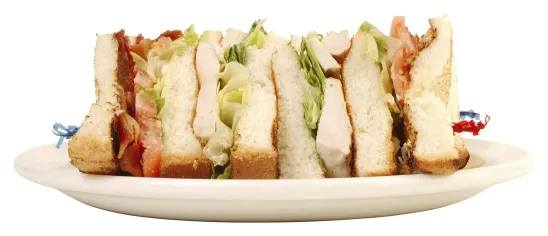Labor disputes are passionate affairs. Workplace grievances elicit all sorts of strident behavior. When the dispute involves a group of employees, the effect can become magnified. The exact point at which the stridency of an employee’s behavior becomes unprotected is not always apparent, and like so much else in labor relations, the line changes with the Board’s make-up. Sometimes the employee’s actions are clearly unprotected as we saw in the recent cases involving the errant human resources representative and in the case of the excitable nurse. Many times the activity is clearly protected even when it is insulting or profane. Moreover, the Board is given a high degree of deference by the reviewing courts and it is unusual to see a Board order reversed.
Recently, however, the United States Court of Appeals for the Eighth Circuit denied enforcement of a Board order concerning, among other things, the discharge of employees engaged in a labor dispute with their sandwich maker employer. Concluding that “the means the disciplined employees used in their . . . attack were so disloyal as to exceed their right to engage in concerted protected activities,” the Court refused to enforce the Board’s order of reinstatement and backpay. Miklin Enterprises, Inc. DBA Jimmy John’s v. NLRB, No. 14-3099 (8th Cir. July 3, 2017)
It All Started With An Organizing Drive
Employees working at ten Minneapolis area sandwich stores began an organizing drive sponsored by the International Workers of the World (“IWW”). For those students of labor relations, the IWW has an interesting and colorful history. An election was held and the union lost. Objections were filed. The employer and the IWW settled the case in a manner which would allow for a rerun election within 18 months if the union desired.
A major focus of the organizing was the lack of paid sick days. The employer had a policy in place which required employees to find their own replacement if they were going to be sick or be subject to termination.
Union Attacks During Flu Season
Sensing an opportunity to highlight the push for paid sick time, the IWW and its supporters used the onset of flu season to pressure the employer. In late January 2011 the union began an attack on the employer by creating a poster which contained two identical images of a sandwich. Above the first image were the words, “YOUR SANDWICH MADE BY A HEALTHY JIMMY JOHN’S WORKER.” Above the second image, “YOUR SANDWICH MADE BY A SICK JIMMY JOHN’S WORKER.” At the bottom of the poster contained the text: “CAN’T TELL THE DIFFERENCE? THAT’S TOO BAD BECAUSE JIMMY JOHN’S WORKERS DON’T GET PAID SICK DAYS. SHOOT, WE CAN’T EVEN CALL IN SICK. WE HOPE YOUR IMMUNE SYSTEM IS READY BECAUSE YOU’RE ABOUT TO TAKE THE SANDWICH TEST.” [A copy of the actual flyer is attached to the last page of the decision]
The union distributed the poster, a press release and a letter to more than one hundred media contacts, including local newspapers and national news outlets.
The press release stated, “As flu season continues the sandwich makers at this 10-store franchise are sick and tired of putting their health and the health of their customers at risk.” The press release threatened that if the owners did not meet with IWW supporters about their demands for paid sick leave the supporters would take “dramatic action” by “plastering the city with thousands of Sick Day posters.”
The letter that accompanied the press release contained similar language threatening to put the poster all over the city. The letter also stated, “By working sick, we are jeopardizing the entirety of [the company’s] image and risking public safety.”
The owner of the franchise met with the IWW supporters and stated the attendance policy was being revised. The IWW warned that if its demands were not met within ten days the posters would be displayed throughout the area. The employer revised the attendance policy, which apparently wasn’t good enough for the IWW supporters who then implemented their threat to plaster the city with the posters.
The employer fired six employees who engaged in the attack and issued warnings to three others who assisted. The attack continued after the discharges with the IWW issuing another press release asserting “It just isn’t safe–customers are getting their sandwiches made by people with the flu and they have no idea. . .” and the “unfettered greed of [the owner]. . .jeopardizes the health of thousands of customers and workesrs almost every day.”
The employer had been cited by the health department only twice, years prior to the dispute, for unrelated issues.
NLRB Decides Employee Actions Protected
A two member majority of the Board concluded “that neither the posters nor the press release were shown to be so disloyal, reckless or maliciously untrue to lose the Act’s protection.” Noting that the Board has developed “considerably” its approach to evaluation of employee disloyalty, the Board held that “an employee’s public criticism of an employer must evidence a malicious motive” in order to lose the Act’s protection. One member of the Board dissented.
Full Appeals Court Overrules Board
A divided panel of the Court originally enforced the Board’s order. The employer appealed to the full court and a ten judge panel heard the case voting 8 to 2 to overrule the Board.
The Court acknowledged that employees have a protected right to communicate with third parties about their dispute. The Court noted that this protection was limited by Section 10(c) of the Act which states, “No order of the Board shall require the reinstatement of any individual as an employee . . .if such individual or employee was discharged for cause.” 29 U.S.C. § 160(c).
The Court then evaluated the Supreme Court’s decision in NLRB v. Local Union No. 1229, IBEW, 346 U.S. 464 (1953) (known in the labor world as “Jefferson Standard” after the employer). In Jefferson Standard, the Supreme Court upheld the Board’s decision that the firing of technicians at a television station was lawful because their actions were unprotected. When bargaining with the union had failed the technicians distributed handbills criticizing the quality and poor programming. The Board found the actions unprotected because “the gist” of the actions “was that the employer ought to be boycotted because he offered a shoddy product” not because the employer was “unfair” to the employees.” 94 NLRB 1507, 1511. The Supreme Court, upholding the Board’s ruling these actions were unprotected, decided the case on broader grounds noting that there “is no more elemental cause for discharge of an employee than disloyalty to his employer.”
The Court next evaluated the Board law construing Jefferson Standard. The Court noted that, “while always purporting to apply Jefferson Standard’s holding, the Board has migrated to a severely constrained interpretation of that decision” which requires that there must exist “evidence of a malicious motive.” The Court ruled this interpretation “fundamentally misconstrued” Jefferson Standard. First, “[b]y holding that no act of employee disparagement is unprotected disloyalty unless it is ‘maliciously motivated to harm the employer,’ the Board has not interpreted Jefferson Standard — it has overruled it.” Second, the Board “refuses to treat as ‘disloyal’ any public communication intended to advance employees’ aims in a labor dispute, regardless of the manner in which, and the extent to which, it harms the employer.”
The Court concluded the Board’s test was an error of law because it effectively removed from the inquiry the central Section 10(c) limitation as defined by the Supreme Court — “whether the means used reflect indefensible employee disloyalty.” Rather, the correct inquiry is “whether the communication reasonably targeted the employer’s labor practices, or indefensibly disparaged the quality of the employer’s product or services.”
Conclusion and Takeaways
The NLRB rarely cares what an appellate court says and usually just limits a court’s holding as “law of the case.” However, as we are on the eve of a new Board (the two appointees are set for confirmation later this week), this case might be fodder for a change in the standard requiring “evidence of malicious intent” which is so high as to be nearly impossible to reach.
This case is useful regardless. It is a good reminder of how standards change with the Board over time, where disparagement of television programming in the 1950’s can be unprotected but a despicable attack on the employer’s public health policies in 2011 is not. The decision provides an excellent analysis of the interplay between the Act, the Board and the Supreme Court. It also collects and analyzes the Board’s rulings in this area of the law and can be a good resource and citation.



 />i
/>i
